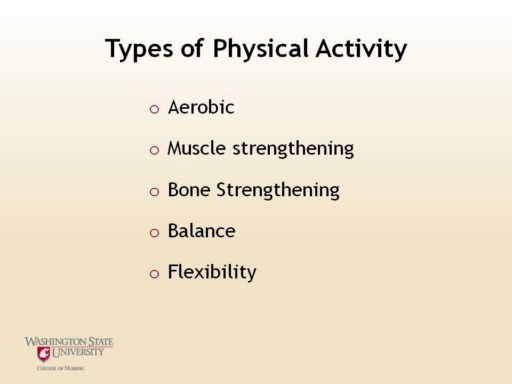| front |1 |2 |3 |4 |5 |6 |7 |8 |9 |10 |11 |12 |13 |14 |15 |16 |17 |18 |19 |20 |21 |22 |23 |24 |25 |26 |27 |review |
 |
Aerobic: Rhythmic movement of large muscles. Increases cardio-respiratory fitness levels. Examples include: running, skipping, hopping, dancing, or swimming. Includes both moderate-intensity aerobic activity (this type of activity increases heart rate and breathing from normal resting rate) or vigorous-intensity (getting the heart beating much faster and breathing much harder than normal) aerobic activity. Muscle Strengthening: Activities requiring increased work of the muscles. This type of activity strengthens the muscles and includes both structured and unstructured activities. Examples include: playing on playground equipment, weight lifting, or strengthening bands. Bone Strengthening: Produced by impact on a hard surface (usually the ground), promotes bone growth and strength through the impact. Can also be aerobic and muscle strengthening such as running or basketball. Balance: Activities which improve and/or maintain one’s balancing abilities. Flexibility: Activities which improve and/or maintain one’s flexibility.
http://www.who.int/dietphysicalactivity/factsheet_recommendations/en/index.html
http://www.cdc.gov/physicalactivity/everyone/guidelines/children.htm |